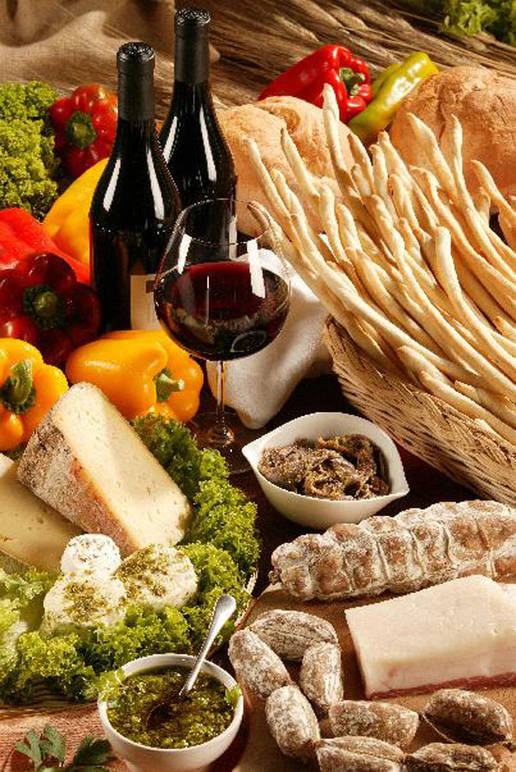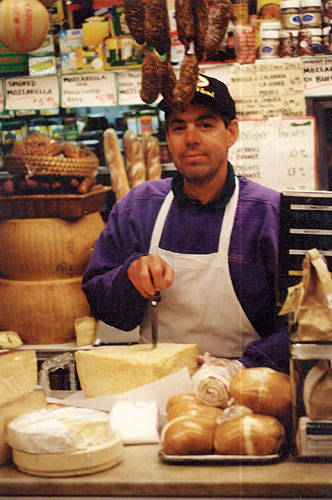When Something is as Popular as Italian Cuisine What in the World Could go Wrong?
When something is as popular as Italian cuisine what in the world could go wrong?
This is what a group of restaurant owners, retailers, producers and culinary experts tried to figure out in a two-day symposium organized by the Gruppo Ristoratori Italiani and hosted at Casa Italiana Zerilli Marimò in New York. The Symposium also featured a dinner at SD26, the famous restaurant founded by legendary Tony May, one of the founders of the institution.
The issues at stake, raised by the knowledgeable participants touched different points of discussion: from the personal points of view fruit of the life experiences of the different chefs and retailers, to the cultural aspects embodied by Italian American traditions as opposed to the strictly Italian ones; and finally to the legal and educational aspects behind the need to certify, codify and determine the authenticity of the “Made in Italy” in order to protect it from imitations and misleading variations.
Since the 1980s, for example, the Italian scenario in New York has dramatically changed. Some people could maintain the point that today some restaurants in New York are more Italian than some restaurants in Italy itself, because they have mastered the art of the best Italian cuisine, they are addressed to sophisticated gourmets use expensive products that often small trattorias in Italy can barely get for themselves.
In the city, there’s a huge world beyond Little Italy. What’s revolutionary is not only how many great authentic Italian restaurants have been created but the fact that most NewYorkers have started to use products like Extra Virgin Olive Oil, Prosciutto di Parma and real Italian mozzarella on a daily basis. On the other hand, if you cross NYC's borders, the closest you’ll come to Italy is probably still through a greasy pizza slice...
These trends are hopefully changing and part of it it’s because people are more informed and educated on the subject and have easy access to great imported products. They are starting to know how to eat healthily but also why sometimes it is important to prefer original products instead of the "Italian sounding" ones. Of course the original might not always be the cheapest and that presents other issues…
The Symposium focused on Italian cuisine and its popularity here in the US. Is its success a success or, in some ways, a defeat?
French Chef Ferdinand Metz highlighted the differences between the French and the Italian cuisines, showing how the first is much more "standardized" than the second, both in terms of recipes and techniques. On the other hand, Italian chefs like Tony May and Cesare Casella lamented a general misunderstanding of what is the "authentic Italian cuisine" and a deep ignorance of its essential characterics
In the huge spectrum of theories presented one can identify the main trends of thought: the first one is that there is one and only “Made in Italy”: the products imported and used must be coming from Italy, and innovations and new techniques must be conceived there just as well. This way one can aim to reach the highest quality of cucina italiana imaginable, and the public should adapt to it. According to this point of view, there is a need to educate the general audience to such high standards, given that nowadays Italian cuisine is commonly portrayed as poor in ingredients and preparation
Then there are those who are able to distinguish and choose between a cuisine that is authentic Italian and one that is inspired. They still use Italian products, but they might get more creative in the preparation and the interpretation of a tradition.
The third group is composed by those who take in much greater consideration Italian American traditions and the needs and requests of the American public. You also have those who argue, on the other hand, that most so-called Italian products are not originally Italian, like tomatoes and coffee, and there is an “evolution” within food culture. Italian food is technically partially North African, Austrian, South American... So who are we to define one standard?
At the extreme end of the spectrum, you have those who don’t think that in the United States, you have to use Italian products to cook Italian dishes. It’s just a matter of recipes, family history and general cultural concepts applied to the United States.
A real Italian might have never eaten nor have prepared in his/her entire life a dish of spaghetti with meatballs, especially if prepared the United States fashion, but who can really dare to take that dish away from Italian Americans in the name of authenticity?
So this is the main issue. What is considered authentic?
Is authenticity just a matter of taste, as some participants suggested? A fish from the Mediterranean or a tomato cultivated in Italy might be tastier or healthier than others coming from abroad, but itn't taste a subjective judgement?
Is authenticity a matter of regional and local knowledge? In a way it is because it would be very counterproductive for an American chef or a retailer nowadays not to go to Italy, not to learn the newest innovations on the spot. The question is if you are then allowed to "play" with that newly learned knowledge and create something different out of it.
Finally is authenticity a legal matter? In the best restaurants nowadays you can find menus featuring labels such as DOP, PDO, DOC, DOCG, which guarantee quality and authenticity. In the grocery stores’ aisles, there is a variety of "Italian sounding" products, or US or foreign brands that openly imitate the logos of famous Italian firms. Fake “Italian names” are given to random food for marketing purposes. The most famous case is the one of Parmesan, that a lot of people don’t know to be very different from the real (but much more expensive) Parmigiano Reggiano. In this case is it just a matter of cheapening and imitating food or can these companies be sued?
The general final idea is that the only possible way to ensure the success and the quality of Italian cuisine in the US is to educate the public and the budding chefs attending American culinary schools: the more you are informed on the origins of a product from the nutritional or the legal point of view, the better it is. No doubt about it.
Maybe it’s not that essential to find a general criteria in terms of food preparation and technique but it’s crucial to definitely focus on the quality of the product before anything else, no matter to what tradition is then applied.
Italian immigrants brought with them a very poor and simple way of cooking great food: you make good, cheap stuff, and feed your family. Nowadays the “cheap” aspect is what has been lost or has lead to some misunderstandings. Italian cuisine has become more elitaire but its hard not to argue that it has improved, not only because it’s closer to the original but because it’s more carefully prepared.
The hope is to have educators, experts working in the food industry and producers coming together to find effective ways to spread and teach the basics of Italian while allowing some grade of innovation within the tradition
GRI SYMPOSIUM 2010
Moderators: John mariani (food journalist and author, The Dictionary of American Food & Drink, America Eats Out), Davide Paolini (Food journalist), Tim Ryan (President of the Culinary Institute of America)
Panelists: Stefano Albertini, Associate Director of Casa Italiana Zerilli-Marimò, Massimo Bottura (Chef, Michelin restaurant Osteria Francescana in Modena), Paul Bartolotta (Spiaggia in Chicago) , Cesare Casella (chef-owner of Salumeria Rosi, Dean of the Italian Culinary Academy), Giovanni Cocco (General Director of ISNART), Michael Colameco (Chef, host/producer of Colameco’s Food Show), Lou Di Palo, (Proprietor of Di Palo Fine Foods), Thomas Gellert (Principal of Gellert Global Group), Tony May (restaurateur, owner of SD26), Ferdinand Metz (chef, spokesperson for the Italian Culinary Foundation), Ennio Ranaboldo Chef Executive Officer of Lavazza’s North America, Gianfranco Sorrentino (owner of restaurant GAttopardo and President of GRI), Michael Wilson (Editor-in-Chief La Cucina Italiana )
Sponsors: Consorzio Speck Alto Adige PGI, Consorzio Tutela Formaggio Asiago PDO, Coalvita Extra Virgin Olive Oil, Italy America Chamber of Commerce, Italian Culinary Foundation, Lavazza, Riso Bello, Atalanta World of Imports, Acqua Smeraldina Natural Artesian water, Swiss Chalet Fine Foods







































i-Italy
Facebook
Google+
This work may not be reproduced, in whole or in part, without prior written permission.
Questo lavoro non può essere riprodotto, in tutto o in parte, senza permesso scritto.